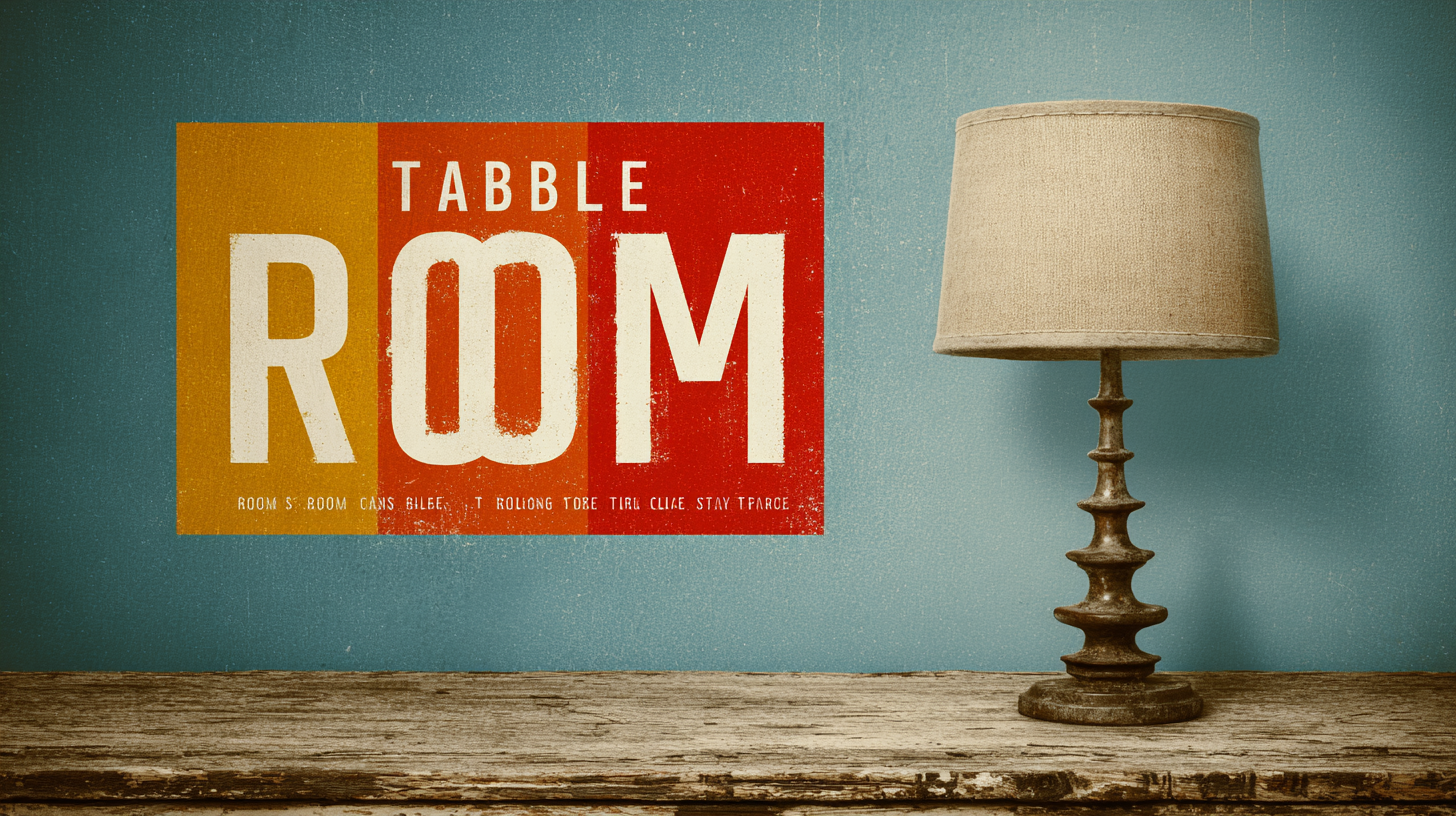Ultimate Guide to Choosing the Best Room Table for Your Space
When it comes to home décor, the significance of selecting the right room table cannot be overstated. According to a recent report by Statista, the global furniture market is projected to reach approximately $650 billion by 2025, with tables representing a significant segment of this market.

Room tables are not just functional pieces; they play a crucial role in defining the aesthetic of a living space and influencing the overall ambiance. Research indicates that well-chosen furnishings can improve mood and promote well-being, demonstrating that the right room table can enhance both style and comfort.
With such an array of options available, including materials, sizes, and designs, it is essential for consumers to consider their specific needs and preferences to make informed choices. In this ultimate guide, we will explore key industry applications and provide compelling reasons for selecting the ideal room table tailored to your unique space.
Key Considerations for Selecting the Perfect Room Table Size and Proportions
When selecting a room table, sizing and proportions are pivotal to achieving a harmonious space. The first consideration is the table height; it should complement the seating arrangement to ensure comfort during use. Standard dining tables usually range from 28 to 30 inches in height, while coffee tables are generally lower, around 16 to 18 inches. Measuring the height of your couches or chairs can guide you in choosing an appropriately sized table that enhances usability and aesthetics.
In addition to height, the table’s overall dimensions must be taken into account. A table that is too large can overwhelm a small room, while one that is too small may feel lost in a spacious area. The ideal width and length should allow for sufficient walking space, typically at least 36 inches around the table for easy movement. Proportionality within the room is also crucial; consider the scale of other furniture pieces and the overall layout. Striking the right balance will not only create a visually pleasing environment but also ensure your chosen table serves its purpose effectively.

Understanding Material Choices: Wood, Glass, Metal, and More
When selecting the best table for your space, understanding material options is crucial to achieving both functionality and aesthetic appeal. Wood remains a classic choice, revered for its warmth and versatility. According to industry reports, solid wood tables can offer longevity with proper care, while engineered wood can provide a budget-friendly alternative without compromising on style. In 2025, sustainable wood sourcing is gaining momentum, with consumers increasingly seeking eco-friendly materials in their furnishings.
Glass tables, on the other hand, lend a contemporary feel to any room. They create an illusion of space, making them ideal for smaller areas. Recent design trends indicate that tempered glass is now favored for its durability and safety. Alongside wood and glass, metals such as stainless steel and aluminum are becoming more popular, particularly in modern and industrial-style interiors, due to their strength and sleek appearance. With the rise of low-maintenance outdoor living, composite materials are also emerging in dining spaces, delivering durability and easy upkeep in 2025. As the market evolves, keeping abreast of these material innovations is key to making an informed choice for your home.
Material Choices for Room Tables
Design Styles: How to Match Your Room Table with Existing Decor
When selecting a room table, the challenge often lies in harmonizing it with your existing decor. Start by identifying the predominant design styles in your space. For example, if your decor leans towards a modern aesthetic featuring sleek lines and minimalistic features, a glass or metal table will complement the environment seamlessly. On the other hand, if your room exudes a cozy, rustic charm with wooden accents and earthy tones, consider a table crafted from reclaimed wood or an antique piece that reflects the warmth of the surroundings.
Color and texture are equally crucial when matching your room table to the decor. A table that echoes the color palette of your furnishings can create a unified look. If your decor involves vibrant colors or intricate patterns, opt for a simpler table design that won't compete for attention. Conversely, a bold table can act as a statement piece in a more subdued room, adding depth and interest. Remember, the key is to strike a balance that enhances the overall aesthetic, creating a cohesive atmosphere that feels intentional and inviting.
Ultimate Guide to Choosing the Best Room Table for Your Space
| Style | Material | Shape | Size (inches) | Color |
|---|---|---|---|---|
| Modern | Glass | Round | 36 | Clear |
| Rustic | Wood | Rectangular | 48 x 24 | Brown |
| Industrial | Metal | Square | 36 | Black |
| Classic | Mahogany | Oval | 60 x 30 | Dark Red |
| Scandinavian | Pine | Rectangular | 50 x 30 | Light Beige |
Functionality and Versatility: Choosing Between Multi-Purpose and Specialty Tables
When selecting a room table, understanding the distinction between multi-purpose and specialty tables is crucial for maximizing both functionality and versatility in your space. Multi-purpose tables are designed to serve various roles, making them perfect for modern living environments where space is often limited. For instance, a dining table that can also work as a workspace allows for seamless transitions between meals and professional tasks. This adaptability not only enhances the efficiency of a room but also ensures that you get more value out of your furniture.
On the other hand, specialty tables are tailored for specific functions and can bring a unique aesthetic to your space. Items like coffee tables with built-in storage or accent tables designed to showcase decorative elements add character and personalized flair to your rooms. While they may not boast the same versatility as their multi-purpose counterparts, they can elevate the overall design and cater to specific needs, making them a valuable addition in thoughtfully curated spaces.
Whether you lean towards the flexibility of multi-purpose treasures or the tailored charm of specialty pieces, your choice should reflect both your lifestyle and design aspirations.
Budgeting for Quality: Industry Insights on Cost vs. Value in Room Tables
When selecting the best room table for your space, understanding the balance between cost and value is essential. While it may be tempting to choose the cheapest option available, investing in quality furniture can enhance your home's aesthetic and functionality. It's crucial to consider not just the initial price but how well the table will serve you over time. High-quality materials and craftsmanship can mean the difference between a table that lasts for years and one that needs to be replaced frequently.

Tip: Before making a purchase, determine your budget and stick to it. Research different brands and read customer reviews to gauge quality. Look for tables made with durable materials, as these often offer better long-term value. Additionally, consider the table's design to ensure it complements your decor, as this can save you costs on future furnishings.
Another key aspect is understanding the true essence of value. Sometimes, spending a little more can save you money down the line, particularly if you choose a table with timeless design and durability. Look for features that can add convenience, such as extendable surfaces or built-in storage. These elements increase functionality, making it a worthwhile investment.
Tip: Attend local furniture fairs or showrooms to see and touch tables firsthand. This experience can provide invaluable insights into the quality you can expect for the price range you’re considering. Always keep an eye out for seasonal sales as well, which can offer the best prices without compromising on quality.
